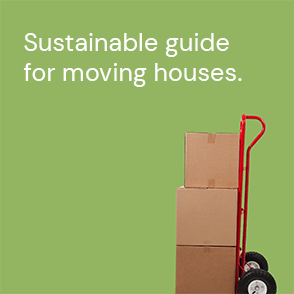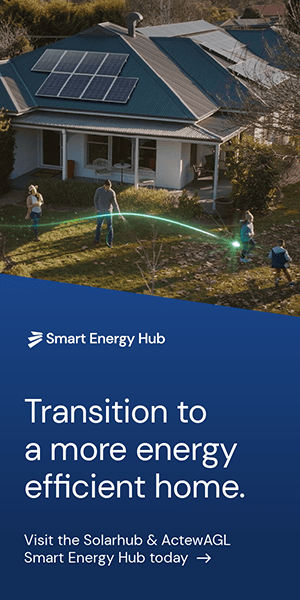ENERGY SAVINGS
How to
move house
sustainably.
Moving house is an exciting time, however it can have a significant environmental impact. From reams of bubble wrap to tossing out unwanted items, a lot of waste can end up in landfill when relocating. However, with a little thoughtful planning and conscious decision-making, you can make your move an eco-friendly one. Here’s how to move home sustainably.
Ditch bubble wrap for eco-friendly packing materials
Soft, scrunchable plastics like bubble wrap are very hard to recycle, and Australia uses 70 billion pieces of it a year. Of the one million tonnes of Australia’s annual plastic consumption, the 2021 National Plastics Plan reports that 84% of single-use plastic is sent to landfill. You can help lower this number by avoiding using bubble wrap and using alternative protective packaging instead.
Consider protecting fragile items with layers of newspaper, blankets, shredded paper or corrugated cardboard. You can also shop around to find biodegradable packing peanuts or biodegradable bubble wrap which biodegrades around 20 times faster than conventional bubble wrap.
Donate, declutter and discard responsibly
Before packing, take the opportunity to declutter your belongings. Sort through your possessions mindfully and responsibly re-home items rather than sending them to landfill or increasing your moving load. No longer need that coffee table? Donate it to a charity store or family friend. Does that unwanted computer still have some lease of life? Sell it on an auction site. You can even use the funds from selling your stuff to go towards your moving expenses.
If you have household items or furniture that have reached their end of life, find a local recycling plant or initiative that can dispose of them responsibly, with minimal environmental impact.
Optimise your moving transportation
If you’re moving a long distance, a large, heavily loaded truck will churn out a lot of harmful greenhouse gas emissions. By planning your move efficiently, you can minimise your transportation emissions. If possible, select a moving company that uses fuel-efficient vehicles or even electric trucks.
Alternatively, explore the option of a shared moving service, where multiple households share the same moving truck, reducing the number of trips required. If you require a moving company to do the entire job for you, find one that utilises environmentally friendly packing materials as well as transportation.
Lower food waste by consuming all perishables pre-move
When moving day arrives, the last thing you want to be faced with is a fridge and freezer still bursting with food. In the lead up to your move, take an inventory of all the perishable food items in your home. Categorise them based on their expiration dates and prioritise the ones that will spoil soonest. Then, create a meal plan based on the perishable items you have, to ensure you use up as much as possible.
If you still have a surplus, share food with friends, neighbours, or colleagues nearby, or donate non-perishable items like tinned food to local food banks or charitable organisations.
Use eco-friendly cleaning products
When doing that final clean-up before leaving, incorporate eco-friendly cleaning practices during your move. Look for cleaning products that are labelled as environmentally friendly, non-toxic, biodegradable, and free from harsh chemicals. Alternatively, you can create your own cleaning solutions using natural and non-toxic ingredients that you may already have at home. For general cleaning purposes, vinegar, baking soda, lemon juice and hydrogen peroxide can be excellent alternatives.
Instead of rolls of paper towels, cut old clothing or bed sheets into rags. If you were throwing them away anyway, this will help to reduce landfill waste too.
Summary
- Protect fragile items with layers of newspaper, blankets, shredded paper or corrugated cardboard instead of bubble wrap.
- Sort through your possessions before moving ensuring you donate, sell or recycle what you no longer need rather than throwing it all into landfill.
- Pick a moving company that uses fuel-efficient vehicles, electric trucks or environmentally friendly packing materials.
- Use natural cleaning products or make your own from ingredients you have already. Cut old clothes or sheets into rags rather than use paper towels.
ActewAGL's energy saving tips are designed to help you take control of your energy use, while reducing your bills and environmental impact. Save with great value energy plans backed by our sustainability promise, supported by 100% local, award-winning service - so you can LIVE A Good Life now and into the future.
For more information about how you can transition to an energy-efficient home visit the SolarHub & ActewAGL Smart Energy Hub today.
Sources
https://www.dcceew.gov.au/environment/protection/waste/publications/national-plastics-plan-summary
Disclaimer: These Energy Savings tips and articles are for information purposes only. Please ensure you are aware of any safety precautions before operating appliances or products.



